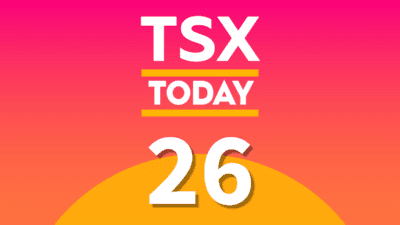If I had to choose, I’d say that Toronto-Dominion Bank (TSX: TD)(NYSE: TD) is the best managed bank in Canada.
It’s not that the other banks are bad, they just have a few more weaknesses. CIBC just lost its Aeroplan credit card (to TD, interestingly enough), one of the most popular cards in the country. Bank of Montreal never has any buzz around it. Royal Bank of Canada is a behemoth in Canada, but has failed miserably in the U.S. Bank of Nova Scotia is doing a good job with its Latin America exposure, but investors still view that part of the world as riskier than back home.
Meanwhile, TD is aggressively growing its loan business, recently overtaking RBC as Canada’s largest lender. It’s also doing a nice job with the U.S. side of the business, growing recent earnings there by nearly 10% compared to last year. Even wealth management and investment banking have both seen solid performances lately. And the company is pleased so far with the aforementioned Aeroplan acquisition from CIBC.
Of course, performance is just one factor when it comes to buying a stock. The other is valuation. There are many companies that are good performers that trade at outlandish P/E ratios. TD currently trades at 14 times its last 12 months of earnings, which is a little expensive compared to its peers, but not overly so. The TSX Composite currently trades at a P/E ratio of approximately 17 times, so TD reasonably valued, at least compared to the overall market.
But bank stocks are usually cheaper than the overall market. They tend to have conservative management, pay moderate to high dividends, and are owned by risk-averse investors. So it’s no surprise that TD shares would trade at a discount to the TSX Composite Index.
So if we can’t compare TD to the rest of the market, what can we compare it to?
How about itself?
There are many ways to go about this, but I chose one that I think is as simple as it is effective. I looked at the company’s dividend yield over the last 11 years, determining what the stock’s yield was when it traded at its yearly low and its yearly high. Let’s take a look at the data and see what it tells us.
| Year | Dividend | Min Price | Max Price | Yield Range |
| 2004 | $0.68 | $21.35 | $24.96 | 2.72%-3.19% |
| 2005 | $0.79 | $24.18 | $30.62 | 2.58%-3.27% |
| 2006 | $0.89 | $28.16 | $34.86 | 2.55%-3.16% |
| 2007 | $1.06 | $33.00 | $38.18 | 2.78%-3.21% |
| 2008 | $1.18 | $20.82 | $35.94 | 3.28%-5.67% |
| 2009 | $1.22 | $16.62 | $33.65 | 3.63%-7.84% |
| 2010 | $1.22 | $30.88 | $38.00 | 3.21%-3.95% |
| 2011 | $1.30 | $34.09 | $42.95 | 3.03%-3.81% |
| 2012 | $1.44 | $38.44 | $42.33 | 3.40%-3.75% |
| 2013 | $1.62 | $40.26 | $49.84 | 3.25%-4.02% |
| 2014 | $1.84* | $47.62 | $57.90 | 3.18%-3.86% |
*On pace to pay in 2014
A few observations about the data:
- 2008-09 might have been the buying opportunity of a lifetime. Look at those yields!
- From 2004-2007 investors were happy with a smaller yield than investors after the financial crisis.
- After the financial crisis, TD’s yield has hovered between 3-4%. The yield never dropped below 3% and only rarely dropped below 3.2%.
The data also tells me something else. That I’d avoid TD at these levels.
The reason is simple. It’s trading at the low end of its yield range over the last five years.
TD has a current yield of 3.28%. Sure, the yield hit below that level at least a few times over the last five years, but the pattern is simple. Investors should buy the stock at a yield of 3.75% or better, and sell when it gets below 3.3%.
Or, better yet, just stay on the sidelines until shares approach a 4% yield. Buying and selling shares based on 0.5% of yield isn’t smart. It adds needless trades and transaction costs, plus triggers taxes in unregistered accounts. But by being patient and looking at longer term trends, investors can figure out where an attractive entry point is. It’s not a perfect system, but based on history it seems to work.







